| Description: |
Daidzein is a natural isoflavone phytoestrogen and a PPAR activator, used as a component of foods and dietary supplements, it should be a promising feed additive for production of high-quality beef meat. Daidzein has antitumor, anti-fibrotic, anti-bone loss, and anti-inflammatory effects. Daidzein inhibits TLR4-MyD88-NF-κB pathway.
|
| In vitro: |
| Mol Immunol. 2014 Aug;60(2):135-42. | | Daidzein enhances efferocytosis via transglutaminase 2 and augmentation of Rac1 activity.[Pubmed: 24859791] | Clearance of apoptotic cells, termed "efferocytosis", is the mechanism required to prevent secondary necrosis and release of proinflammatory cytokines. Defective efferocytosis is cumulatively regarded as one of mechanisms in the development of autoimmune and chronic inflammatory diseases. Our previous finding showed that ethanolic extract from Glycine tomentella Hayata (GTH) can enhance mouse macrophage RAW264.7 efferocytosis (clearance of apoptotic cells). We have demonstrated that the major components of GTH are Daidzein, catechin, epicatechin and naringin.
METHODS AND RESULTS:
Here, we explore the potential of each component in modulating efferocytic capability. For this, RAW264.7 cells were cultured with CFDA-stained apoptotic cells and assayed by flow cytometry. We found that Daidzein is the main component of GTH, and it can enhance RAW264.7 efferocytosis dose-dependently. Moreover, the enhancive effect of Daidzein on macrophage efferocytic capability is accompanied by increased transglutaminase 2 (TG2) at both mRNA and protein levels. TG2 knockdown attenuated Daidzein increased macrophage efferocytic capability. After treatment with Daidzein, increased phosphorylation was observed in Erk, but not in p38 and JNK. Finally, we report that after Daidzein treatment, Rac1 activity was markedly increased and the mitochondrial membrane potential was decreased, which may contribute to efferocytosis.
CONCLUSIONS:
Taken together, these data suggest that enhancement of macrophage efferocytic capability by Daidzein treatment was mainly through up-regulation of TG2 expression and Rac1 activity. Daidzein may have the therapeutical potential in the treatment of inflammatory diseases. | | 2016 Feb 22;11(2):e0149676. | | The Dietary Isoflavone Daidzein Reduces Expression of Pro-Inflammatory Genes through PPARα/γ and JNK Pathways in Adipocyte and Macrophage Co-Cultures[Pubmed: 26901838] | | Abstract
Obesity-induced inflammation caused by adipocyte-macrophage interactions plays a critical role in developing insulin resistance, and peroxisome proliferator-activated receptors (PPARs) regulate inflammatory gene expression in these cells. Recently, the soy isoflavone Daidzein was reported to act as a PPAR activator. We examined whether Daidzein affected adipocyte-macrophage crosstalk via the regulation of PPARs. Co-cultures of 3T3-L1 adipocytes and RAW264 macrophages, or palmitate-stimulated RAW264 macrophages were treated with Daidzein in the presence or absence of specific inhibitors for PPARs: GW6471 (a PPARα antagonist), and GW9662 (a PPARγ antagonist). Inflammatory gene expression was then determined. Daidzein significantly decreased chemokine (C-C motif) ligand 2 (Ccl2, known in humans as monocyte chemo-attractant protein 1 (MCP1)) and interleukin 6 (Il6) mRNA levels induced by co-culture. In 3T3-L1 adipocytes, Daidzein inversed the attenuation of adiponectin gene expression by co-culture, and these effects were inhibited by the PPAR-γ specific inhibitor. Daidzein also decreased Ccl2 and Il6 mRNA levels in RAW264 macrophages stimulated with palmitate or conditioned medium (CM) from hypertrophied 3T3-L1 adipocytes. This inhibitory effect on Il6 expression was abrogated by a PPAR-α inhibitor. Additionally, we examined the activation of nuclear factor-kappa B (NF-κB) and c-Jun N-terminal kinase (JNK) pathways and found that Daidzein significantly inhibited palmitate-induced phosphorylation of JNK. Our data suggest that Daidzein regulates pro-inflammatory gene expression by activating PPAR-α and -γ and inhibiting the JNK pathway in adipocyte and macrophage co-cultures. These effects might be favorable in improving adipose inflammation, thus, treatment of Daidzein may be a therapeutic strategy for chronic inflammation in obese adipose tissue. |
|
| In vivo: |
| Int Immunopharmacol. 2015 Jun;26(2):392-400. | | Daidzein attenuates lipopolysaccharide-induced acute lung injury via toll-like receptor 4/NF-kappaB pathway.[Pubmed: 25887269] | Daidzein, a diphenolic isoflavone from many plants and herbs, has been reported to have anti-inflammatory properties. However, the effects of Daidzein on lipopolysaccharide (LPS)-induced acute lung injury have not been determined. The aim of this study was to detect the effects of Daidzein on LPS-induced acute lung injury and investigate the molecular mechanisms.
METHODS AND RESULTS:
Daidzein was intraperitoneally injected (2, 4, 8 mg/kg) 30 min after intratracheal instillation of LPS (5 mg/kg) in rats. The results showed that Daidzein treatment remarkably improved the pulmonary histology and decreased the lung wet/dry weight ratios. We also found that Daidzein significantly inhibited LPS-induced increases of macrophages and neutrophils infiltration of lung tissues, as well as markedly attenuated MPO activity. Moreover, Daidzein effectively reduced the inflammatory cytokines release and total protein in bronchoalveolar lavage fluids (BALF). Furthermore, Daidzein significantly inhibited LPS-induced toll-like receptor 4 (TLR4) and myeloid differentiation factor 88 (MyD88) protein up-expressions and NF-κB activation in lung tissues. In vitro, Daidzein obviously inhibited the expressions of TLR4 and MyD88 and the activation of NF-κB in LPS-stimulated A549 alveolar epithelial cells.
CONCLUSIONS:
In conclusion, these data indicate that the anti-inflammatory effects of Daidzein against LPS-induced ALI may be due to its ability to inhibit TLR4-MyD88-NF-κB pathway and Daidzein may be a potential therapeutic agent for LPS-induced ALI. | | Biochimie. 2014 Aug;103:23-36. | | Daidzein exhibits anti-fibrotic effect by reducing the expressions of Proteinase activated receptor 2 and TGFβ1/smad mediated inflammation and apoptosis in Bleomycin-induced experimental pulmonary fibrosis.[Pubmed: 24769130] | Pulmonary fibrosis (PF) is a progressive lethal disorder.
METHODS AND RESULTS:
In this study, the effect of Daidzein, a soyisoflavone against Bleomycin (BLM) induced PF in rats was elucidated. A single intratracheal instillation of BLM (3 U/kg.bw) was administered in rats to induce PF. Daidzein (0.2 mg/kg) was administered subcutaneously, twice a week for a period of 28 days. Daidzein restored the histological alteration and aberrant collagen deposition, suppressed the mast cells, and reduced the expressions of Cyclooxygenase 2 (COX2) and Nuclear factor kappa B (Nf-kB) in lung tissue of BLM-induced rats. Treatment with Daidzein reduced the expression of Matrix metalloproteinase 2 (MMP-2) and increased the expression of Tissue inhibitor of matrixmetalloproteinases 1 (TIMP 1). Recently, Proteinase activated receptor 2 (PAR2) has been reported to play a major role in the progression of PF. Confocal microscopic and immunoblot analysis revealed that BLM injured rat lungs exhibited increased expression of PAR2 that was reduced upon treatment with Daidzein. During BLM induction, Transforming growth factor beta (TGFβ1) was found to be up-regulated along with p-smad2/3, a mediator of TGFβ signaling. Further, Daidzein regulated the apoptosis by modulating the expressions of Bcl-2, Bax and caspase 3.
CONCLUSIONS:
This study provides evidence on the anti-fibrotic role of Daidzein in BLM-induced experimental fibrosis. | | J Nutr. 2000 Jul;130(7):1675-81. | | Daidzein is more efficient than genistein in preventing ovariectomy-induced bone loss in rats.[Pubmed: 10867035] | We investigated the ability of genistein and Daidzein, two soybean isoflavones, compared with that of 17 alpha-ethinylestradiol, to prevent bone loss in ovariectomized rats, a model for postmenopausal osteoporosis.
METHODS AND RESULTS:
Female Wistar rats (n = 65; 12 mo old) were either sham-operated (SH; n = 13) or ovariectomized (OVX; n = 52). On d 0, OVX rats were randomly assigned to groups as follows: 13 received genistein [G; 10 mcg/(g body weight. d)], 13 were treated with Daidzein [D; 10 mcg/(g body weight. d)], 13 received 17 alpha-ethinylestradiol [E(2); 30 mcg/kg body weight. d)] and 13 were untreated (OVX). Compounds were mixed with a soy protein-free powdered semipurified diet and given orally for 3 mo. On d 90, the bone mineral density (BMD) in lumbar vertebrae, femur and its metaphyseal and diaphyseal zones (rich in cancellous and cortical bone, respectively) was lower in OVX than in SH (P < 0.01). In D or E(2), the four BMD were not different from SH, whereas in G, only the diaphyseal BMD was not different from SH. Image analysis performed in the distal femur metaphysis revealed that the cancellous bone area was lower in OVX than in SH (P < 0.01). Only the area in D was not different from that in SH. Finally, the bone turnover, which was higher in OVX than in SH (P < 0.005 and P < 0.05 for plasma osteocalcin concentration and urinary deoxypyridinoline excretion, respectively), was not different in G, D or E(2) compared with SH.
CONCLUSIONS:
Therefore, consumption of 17 alpha-ethinylestradiol or Daidzein was more efficient than genistein in preventing ovariectomy-induced bone loss in rats. |
|


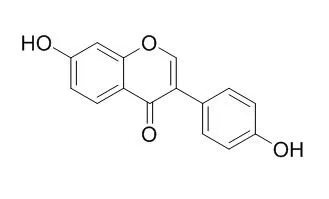

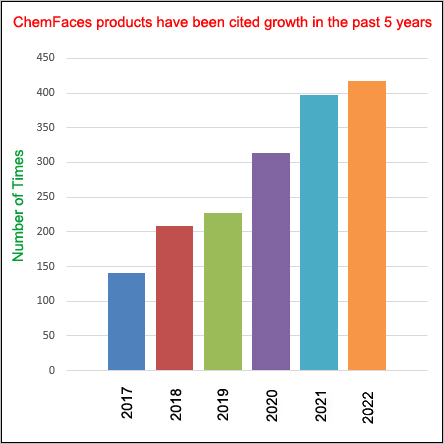
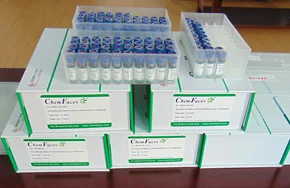
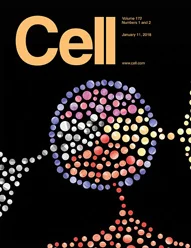 Cell. 2018 Jan 11;172(1-2):249-261.e12. doi: 10.1016/j.cell.2017.12.019.IF=36.216(2019)
Cell. 2018 Jan 11;172(1-2):249-261.e12. doi: 10.1016/j.cell.2017.12.019.IF=36.216(2019)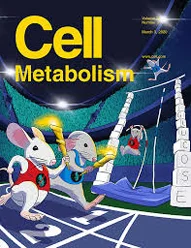 Cell Metab. 2020 Mar 3;31(3):534-548.e5. doi: 10.1016/j.cmet.2020.01.002.IF=22.415(2019)
Cell Metab. 2020 Mar 3;31(3):534-548.e5. doi: 10.1016/j.cmet.2020.01.002.IF=22.415(2019)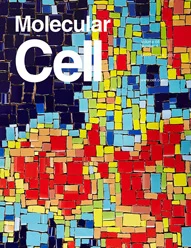 Mol Cell. 2017 Nov 16;68(4):673-685.e6. doi: 10.1016/j.molcel.2017.10.022.IF=14.548(2019)
Mol Cell. 2017 Nov 16;68(4):673-685.e6. doi: 10.1016/j.molcel.2017.10.022.IF=14.548(2019)